While passing through New York City recently, I decided to duck into the historic Waldorf Astoria hotel to have a look at its famous lobby before the hotel closes for construction at the end of February 2017. Every major luxury hotel goes through periods of renovation from time to time, but when this iconic location re-opens in two to three years, many of its hotel rooms will have become apartments or condos.
The art deco edifice at 310 Park Avenue opened its doors in Midtown Manhattan in 1931. Since then, its kitchen has brought forth such iconic staples of world gastronomy as the Waldorf salad, Eggs Benedict, Thousand Island dressing, and Red Velvet cake.
Presidents, celebrities, musicians, and royalty regularly stayed or lived at the Waldorf-Astoria.
The property was sold to Chinese investment group Anbang in 2014 for $1.95 billion, making it the most expensive price ever paid for a hotel. Though the group hasn’t confirmed how much of the hotel is to be converted into flats, sources estimate that only 20 percent of the original sprawling hotel will still be used as hotel space.
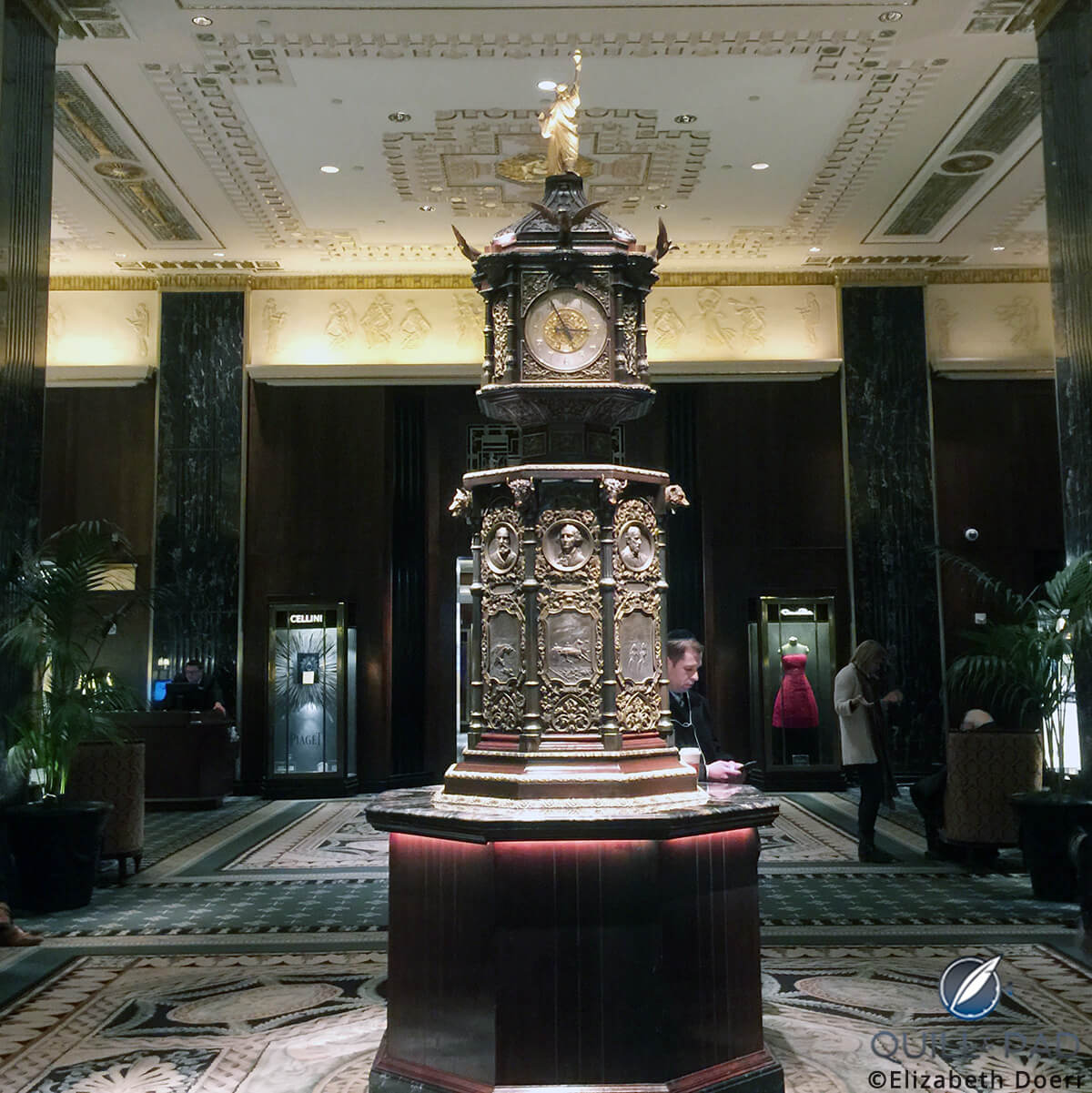
The clock in the lobby of the Waldorf-Astoria hotel, New York City, is a focal point
This definitely marks the end of an era, which makes it is a great time to have a closer look at the extraordinary clock that graces its lobby.
An electric presence
When I walked into the Waldorf-Astoria’s impressive lobby, the first thing I saw was the nine-foot-tall bronze-and-mahogany clock tower topped off by a gilded depiction of Lady Liberty. A gift from Queen Victoria to America, this unique timekeeper made its debut at the World’s Fair in Chicago in 1893, the same six-month fair on the banks of Lake Michigan that brought us Wrigley’s gum and the Ferris wheel (described in detail in Erik Larson’s The Devil in the White City, a must-read).
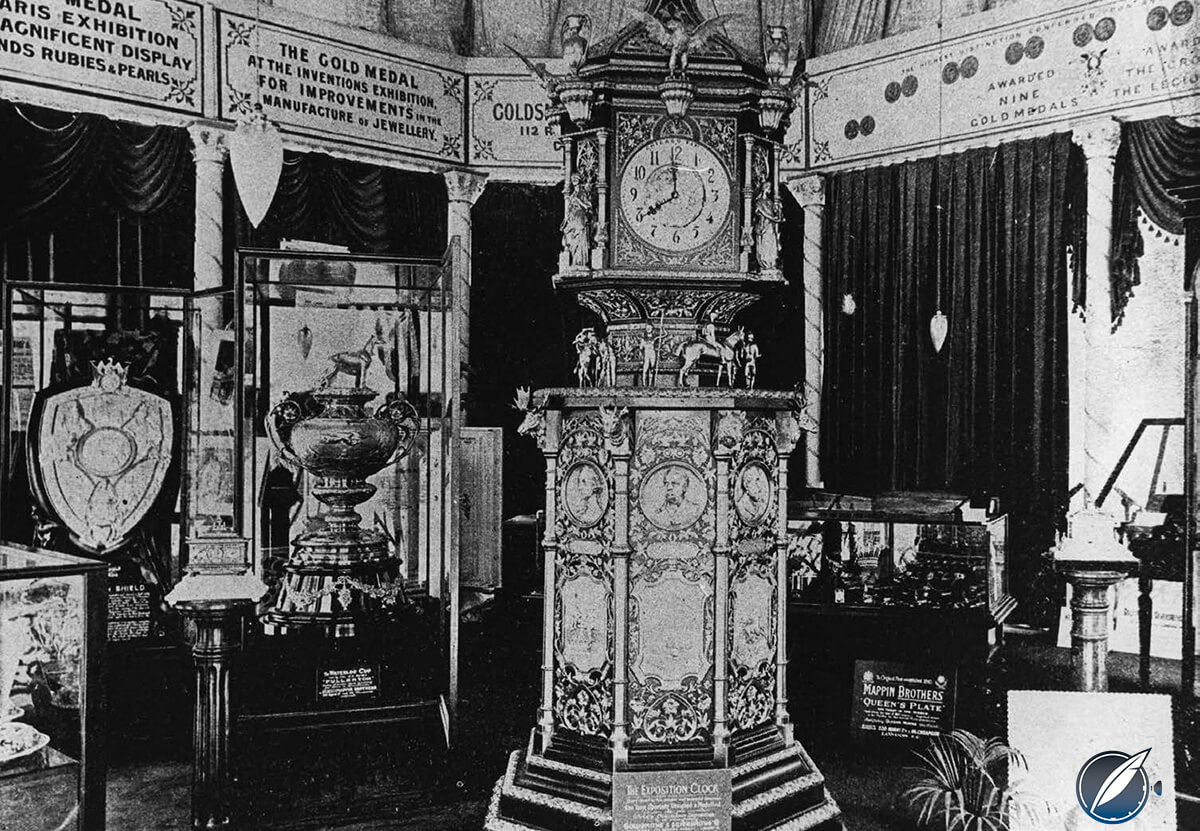
Historical photo of the clock now in the Waldorf-Astoria lobby at the 1893 World’s Fair in Chicago (photo Wiki Commons)
Queen Victoria commissioned the Goldsmith Company of London to create this clock in the late nineteenth century. It is doubly remarkable in that the clock is powered by an electric movement, though to be fair progressive technology was an overwhelming theme at that edition of the World’s Fair.
Not long after the fair had ended in October 1893, American businessman John Jacob Astor IV bought it for an unknown sum. According to a 1903 brochure from the hotel’s archives, the clock tower was valued at £25,000 at the time – a sum that would be equivalent to more than $1 million now.
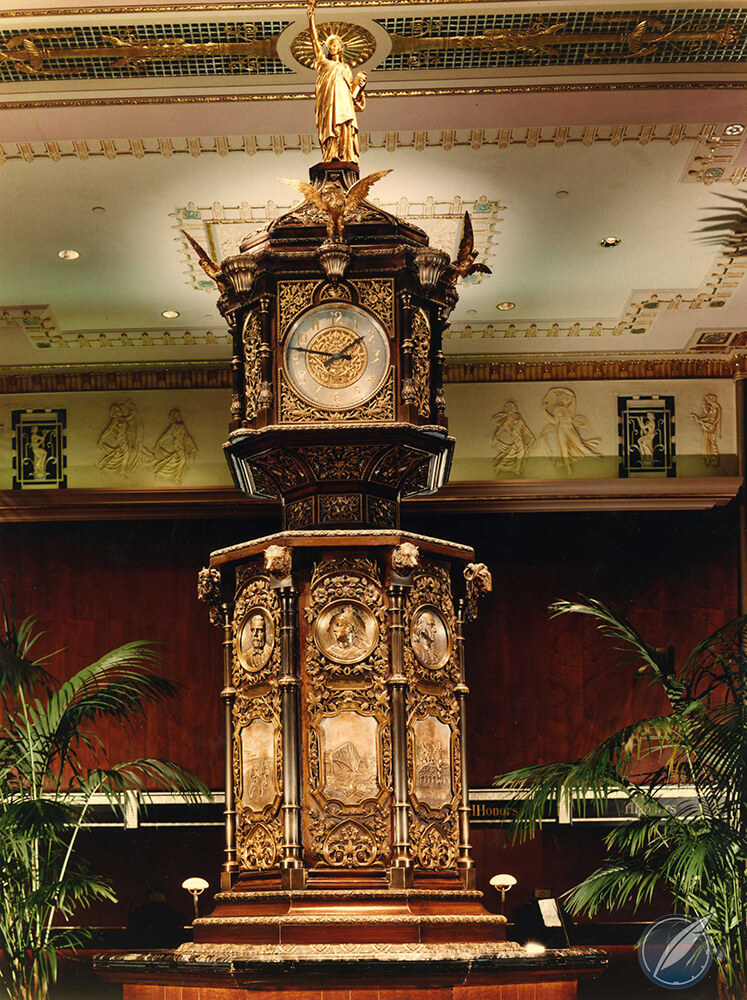
Iconic clock in the lobby of the Waldorf-Astoria hotel, New York City
Astor built the original Astoria hotel in 1897 on Fifth Avenue, four years after his relative William Waldorf Astor built the Waldorf on an adjoining property. These two significant hotels, both built in German Renaissance style by architect Henry Janeway Hardenbergh, were connected by the 300-meter Peacock Alley after a merger the same year.
The gargantuan hotel comprised 1,300 rooms, making it the largest in the world at that time. And it was the world’s first hotel to offer private bathrooms and full electricity.
The clock became a focal point within the original Waldorf-Astoria on Fifth Avenue, where it was located in front of the Rose Room restaurant.
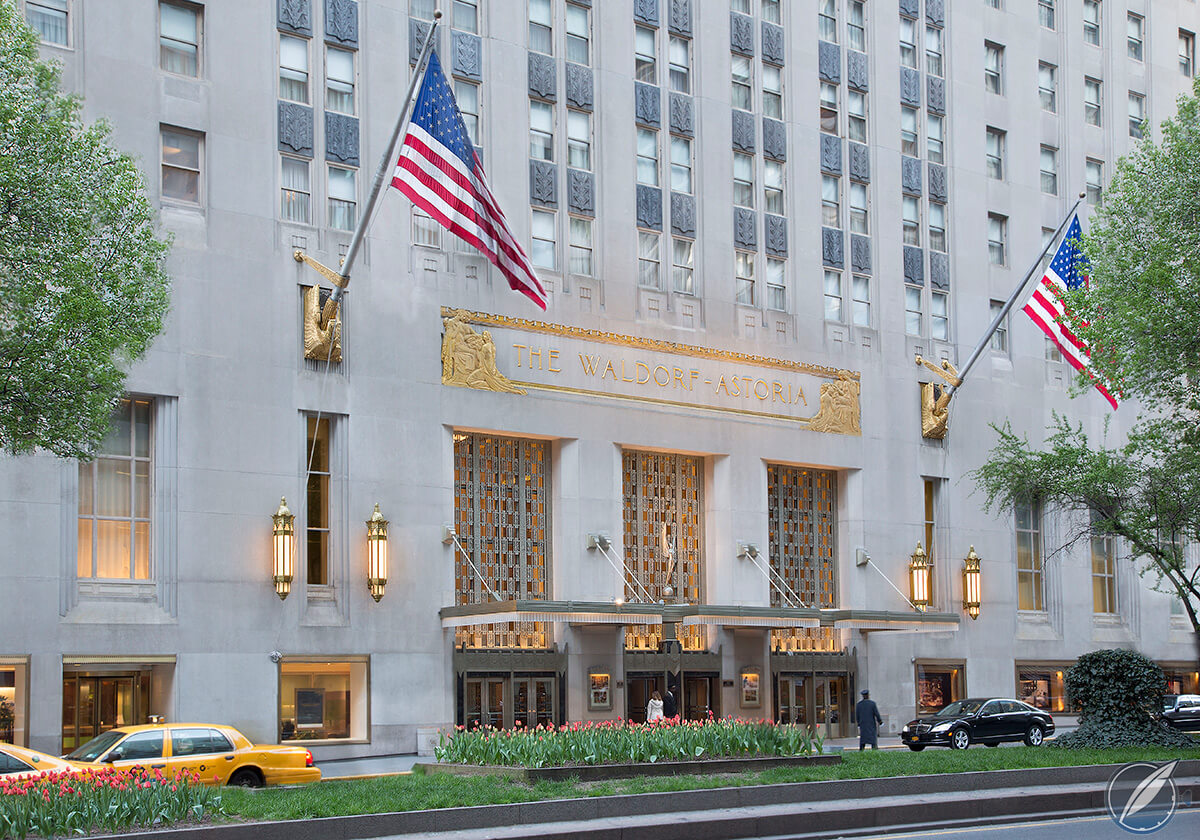
Park Avenue entrance of the Waldorf-Astoria hotel, New York City (photo Wiki Commons)
The original Waldorf-Astoria was demolished in 1929 to make space for the Empire State Building. The Waldorf-Astoria as it stands today was designed by architects Schultze and Weaver and completed in 1931. At 47 stories, it was the world’s tallest hotel until 1963. And until 2014, it was part of the Waldorf division of Hilton Hotels.
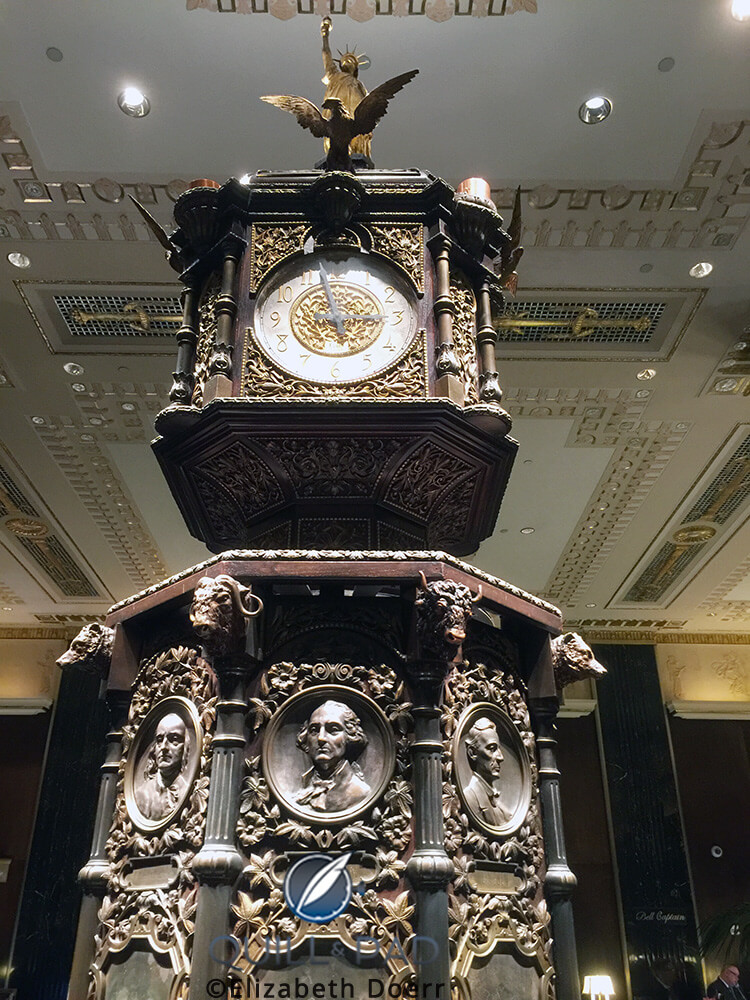
Clock in the lobby of the Waldorf-Astoria hotel, New York City
The only constant is change
The clock’s octagonal tower features bronze bas-relief busts of Queen Victoria, Benjamin Franklin, and six American presidents including George Washington, Andrew Jackson, William Henry Harrison, Abraham Lincoln, Ulysses S. Grant, and Grover Cleveland.

Bronze bas-relief bust of George Washington on the clock in the Waldorf-Astoria hotel, New York City
The original clock did not have the gilded Statue of Liberty miniature crowning it; this arrived in 1902 as a gift to Astor from French government officials soon after he purchased the clock. The gift was made in honor of the hospitality his hotel had shown the people of France since he opened his hotel.
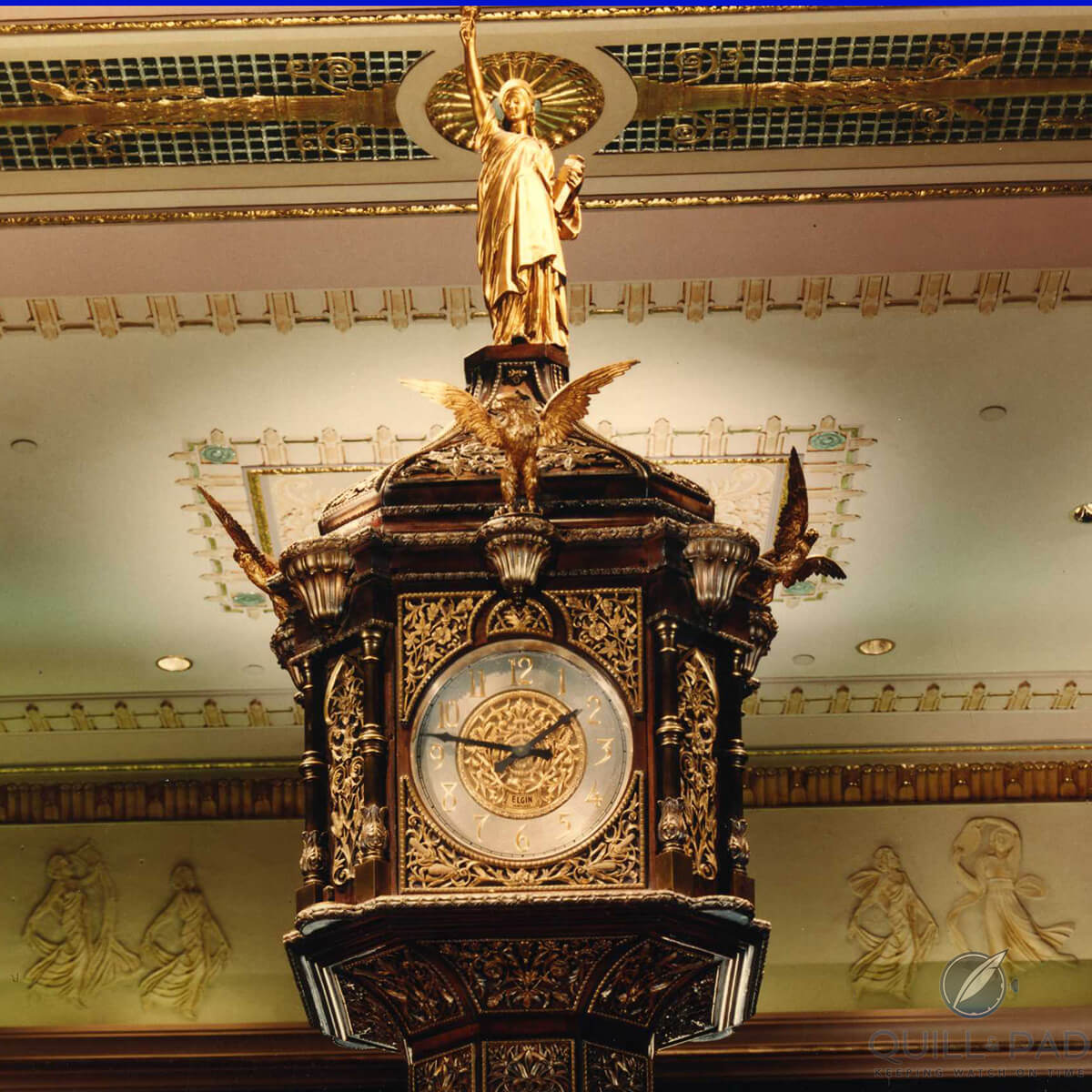
Lady Liberty atop the clock in the lobby of the Waldorf-Astoria hotel in New York City
Apparently Queen Victoria did not care for Astor’s alteration to the clock, and legend has it that she wanted to purchase it back. This did not occur.
Also, the clock originally was outfitted with gold-plated silver figurines that revolved around the platform between the bust and clock levels when chiming was on. It’s thought that the figures went missing or were misplaced when the clock went into storage in 1929 due to the original building’s demolition.
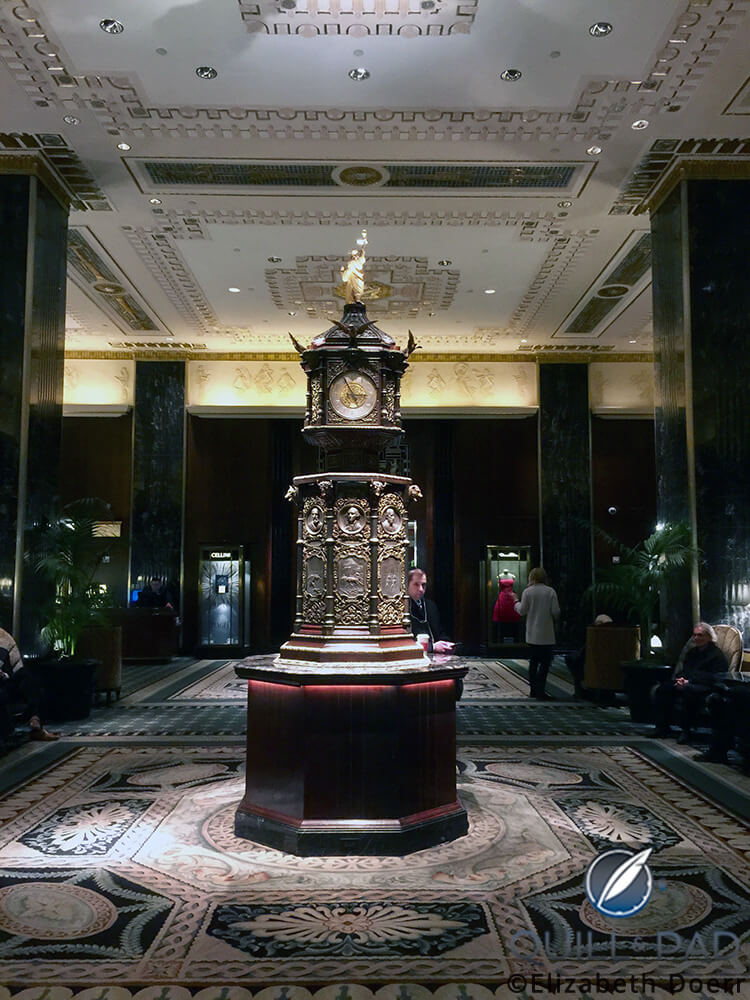
Clock in the lobby of the Waldorf-Astoria hotel, New York City (photo Wiki Commons)
And after those moments of nostalgia contemplating a history I had only just come to know, the time came for me to take my leave of the historic building’s lobby, so I sauntered past the Cellini watch boutique and other shops located at the lobby level on my to the Lexington Avenue exit. But not before I heard the sonorous Westminster chimes, which ring every quarter hour and which invited me to continue admiring the clock in wonder for a little while longer before taking my leave.
For more information on the hotel’s uncertain fate, see www.nytimes.com/2016/07/24/nyregion/chasing-waldorfs-history-as-it-becomes-history-itself.
Quick Facts
Height: 9 feet / 3 meters
Weight: approximately two tons
Movement: electric
Case materials: bronze, mahogany
Some information in this post originates in a story by Rachel Young from Cellini’s annual Status magazine of 2014.
Trackbacks & Pingbacks
-
[…] Center, which we visited after disembarkation, we arrived and were pleased to see a modern version the famed Waldorf clock in the […]
Leave a Reply
Want to join the discussion?Feel free to contribute!





















































Magnificently beautiful clock and bit of history! Thank you for this article! This will be a must see when I visit.
Thanks for the article Beth. One of the hidden gems of NYC for sure.
I always stop and admire it on the way through the lobby to visit Cellini. Sure hope it reappears in a prominent place at the new lobby.
Thanks, Mike!
Hi Elizabeth. This article is fascinating and expertly written. As a history lover, I enjoyed every word. This is why Quill & Pad is a must read!
Hi, Keith! So nice to hear from you, it’s been a long time! Thanks so much for reading, I’m glad you’re visiting our site.
Fantastic article Elizabeth, thanks for sharing!
Jasmine
Thank you for reading, Jasmine!
Pity about the current ownership. All for the money.
Fabulous article Elizabeth, I found this to be journalism at it’s finest.
Thank you!